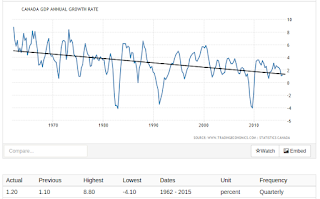Bad things with significant negative
financial effects can and do happen in retirement, not just
occasionally but often. The 2015 survey by the Ontario Securities
Commission Financial
Life Stages of Older Canadians found that close to 60%
of people 50 and over had experienced an event that was major enough
to affect their retirement plans or ability to live off their
retirement savings. Health issues were certainly prominent but a
range of other matters also caused serious financial problems –
helping out adult family members, permanently losing money in the
stock market, major home repair bills after a disaster, losing
employee benefits, divorce or separation, funeral expenses, collapse
of real estate value, business or personal bankruptcy and investment
scams. Often more than one event descends on the unlucky. Such events
do not lessen the longer one is into retirement either. They happen
at any age with about the same frequency.
You may well find that your job as a
parent never really ceases. Retired parents often find themselves
providing financial help to adult children. You never cease being a
sibling or a child either. If brothers, sisters, mom and dad, maybe
even cousins, aunts, uncles run into financial trouble there might
well be requests for help or a perceived obligation to do so,
especially if you are comfortably well off. However much one may wish
to apply “tough love” and say no, it seems to be very difficult
to overcome emotional bonds. A 2015 survey from the Bank of Montreal
Wealth Institute, aptly named The
Family Bank, found that parents were willing to delay
their own retirement, save less, withdraw savings and have a less
comfortable retirement, even take on debt at times, to provide
financial support. Very often it's not just emergency or one-time
support, it's also monthly bills and day-to-day expenses as the
survey found.
People retired nowadays are giving
support about twice as much to their adult children as they received
from their own parents. BMO quotes psychotherapist and parenting
expert Alyson
Schafer who says there is a danger that this will
create an unhealthy dependency and prevent the child from attaining
the mental resiliency, skills and strategies to deal with life's
inevitable frustrations, challenges and setbacks. It's tough to find
the right balance between helping people get on the road to
self-reliance and creating dependency.
There are various possible ways to deal
with these life events to ease or avoid the financial pain. The
simplest and most general plan is to have a larger cash emergency
fund and a spending buffer in the form of a higher income than you
need strictly for yourself. On specific events, pre-paying for a
funeral is one tactic. Home insurance is a natural protection against
major home accident repair bills. Permanently losing money in the
stock market, to the extent that it could cause serious financial
harm, should simply be avoided with a proper set of investments, as
we have explained in many previous posts (see our Guide to Self-Directed Investing). One of the key principles to do that
– diversification – also applies to preventing catastrophic harm
from personal or business bankruptcy and real estate value collapse.
When bad events do happen, most already-retired people end up cutting
back their spending i.e. being forced into a lower standard of
living and / or cashing in savings earlier than desired.



